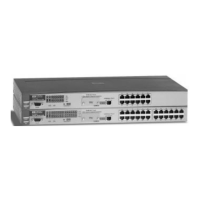
Do you have a question about the HP ProCurve Switch 212M and is the answer not in the manual?
| Model | HP ProCurve Switch 212M |
|---|---|
| Layer | Layer 2 |
| Switching Capacity | 8.8 Gbps |
| RAM | 64 MB |
| Flash Memory | 16 MB |
| Forwarding Rate | 6.5 Mpps |
| Jumbo Frame Support | Yes |
| MAC Address Table Size | 8K entries |
| Weight | 2.5 kg |
| Features | Port Mirroring |
| Compliant Standards | IEEE 802.3, 802.3u, 802.3x |
Introduction to management interfaces and their functions.
Benefits and features of using the web browser for management.
Benefits and features of using the console for management.
Overview and benefits of using HP TopTools for network management.
Methods for assigning IP address and subnet mask to the switch.
Step-by-step guide for manually configuring the switch's IP address.
Guidance on accessing the switch after IP configuration is complete.
Introduction to the switch's web-based management interface.
System and software requirements for accessing the web interface.
How to initiate a connection to the switch via a web browser.
Accessing the switch through HP TopTools network management software.
Essential tasks for initial setup and security in the web interface.
Description of the main screens and elements within the web interface.
Introduction to the switch's command-line interface.
Procedures for establishing and terminating a console connection.
Description of the options available in the console's main menu.
How to navigate and interact with console screens.
Setting up and managing user access via passwords on the console.
Steps to restart the switch using the console interface.
Accessing and using the command-line interface for advanced tasks.
Introduction to HP TopTools for switch monitoring and management.
Key SNMP features supported by the switch for network management.
Steps required to configure the switch for SNMP management.
Utilizing RMON and Extended RMON for network monitoring and analysis.
Introduction to configuring switch parameters.
Table comparing configuration features available via console and web.
Configuring URLs for online help and support resources.
Setting up IP addressing for network management.
Configuring IP settings using the web browser interface.
Configuring IP settings using the switch console.
How the switch uses DHCP/Bootp for IP address acquisition.
Setting up SNMP communities for secure network management.
Configuring IP stations to receive SNMP trap packets.
Configuring terminal emulation and communication parameters.
Setting basic management information like system name and location.
Configuring operating parameters for individual switch ports.
Designating a port for monitoring traffic on other switch ports.
Enabling and configuring STP to prevent network loops.
Managing IP multicast traffic for multimedia applications.
Introduction to monitoring and analyzing switch performance.
Accessing status and counter information via the console.
Displaying overall switch operational status and resource usage.
Viewing MAC, IP, and network numbers for switch management.
Monitoring the operational status of each individual switch port.
Analyzing traffic patterns and activity on each port.
Viewing learned MAC addresses and their associated switch ports.
Listing MAC addresses detected on a specific switch port.
Monitoring current STP parameter settings and statistics.
Viewing active IP multicast groups and port connections.
Primary methods and tools for diagnosing switch problems.
Resolving issues with accessing the switch via web or console.
Diagnosing problems indicated by abnormal network traffic or behavior.
Leveraging the event log to identify and troubleshoot issues.
Using built-in tools like Ping, Link Test, and configuration browsing.
Executing and interpreting Ping and Link tests for connectivity.
Viewing the switch configuration for troubleshooting purposes.
Procedure to reset the switch to its original factory settings.
Introduction to transferring OS and configuration files.
Methods for updating the switch's operating system.
Step-by-step guide for downloading OS via TFTP.
Step-by-step guide for downloading OS via Xmodem.
Downloading OS using HP TopTools Download Manager.
Transferring OS between networked switches.
Common issues and solutions for TFTP download failures.
Commands and methods for backing up or restoring configurations.
Introduction to MAC addresses assigned to the switch.
Methods to find the switch's base and port MAC addresses.
How to locate the switch's primary MAC address.
Displaying MAC addresses assigned to individual switch ports.
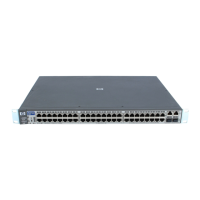
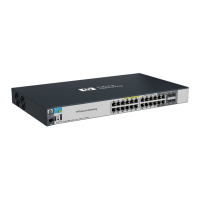
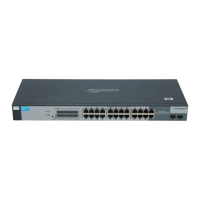
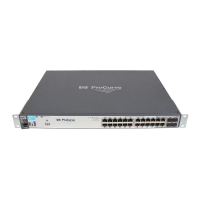
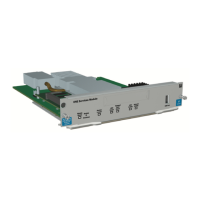
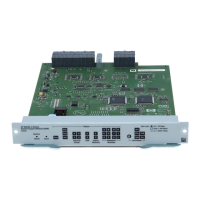

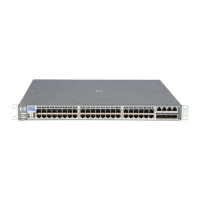
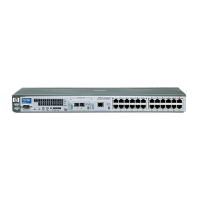
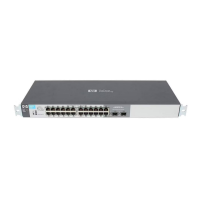
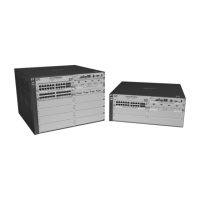
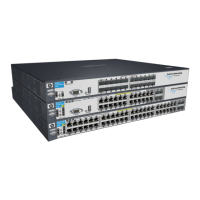
